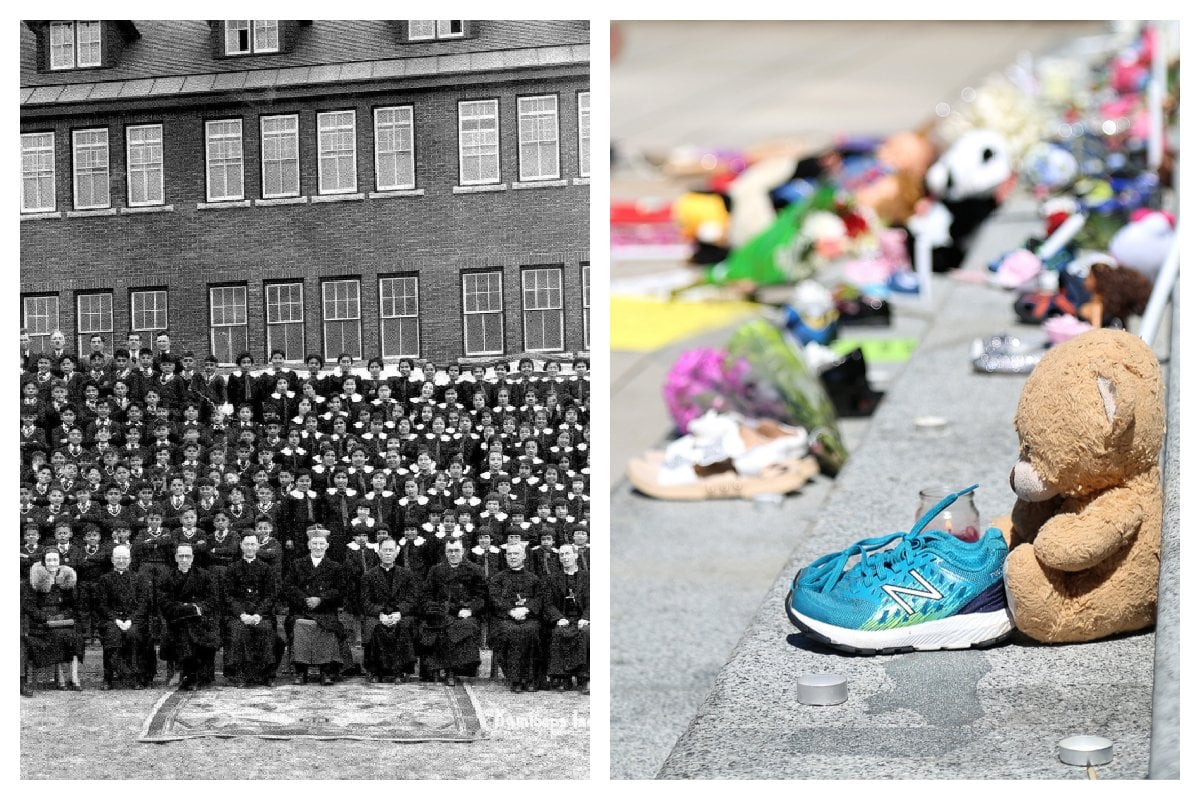
This post deals with child abuse and sexual assault and might be triggering for some readers.
A red brick building stands in the city of Kamloops.
It was once the largest residential school in Canada, with a granite chimney and stone detailing beneath dozens of perfectly symmetrical windows.
The mountains of British Columbia rise and fall behind it, the entranceway of number 345 reading 'The Kamloops Indian Residential School'.
For decades, former students spoke of a sense of knowing. Knowing their classmates went to school one day and never came back.
Then, last year, a ground penetrating radar specialist ran an antenna across the parameters of the school. This was the culmination of decades of advocacy from the First Nations community who demanded to know what lay beneath the school grounds.
What they discovered was the bodies of 215 children, some as young as three years old.
They had been buried without a tombstone, their lives erased from history.
But these are not the only mass graves hidden beneath schools in Canada. There are dozens more.
Estimates vary, but experts believe there are between 3200 and 6000 children who died amid abuse and neglect in residential schools during the 19th and 20th centuries.

Top Comments